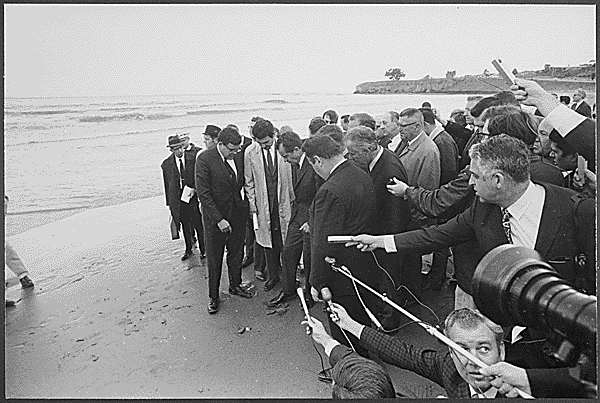

Climate Anxiety.
Sociologist Kari Norgaard’s data shows that the climate movement functions according to a myth of “information” deficit, the concept that, in order to act on climate change, people need increasingly more information and evidence (Sarah Jaquette Ray 36). In reality, his research shows that aligning values with facts is a bigger predictor and influence on persuading citizens than scientific certainty.
This project functions not as a compilation of facts, but as a converging platform that serves to appeal to emotion and personal experience. Similarly, this project will fill the gap in knowledge and strive to make a stronger appeal to the urgency of climate science by highlighting the emotions behind politics and the spark of activism in a local context (Santa Barbara and California).
"The way ahead will require not just the science of climate, but the science of emotions, to help us balance apathy, fear, and despair with efficacy, compassion, and desire." ("A Field Guide to Climate Anxiety" 33).
What is the purpose of this project?

policy timeline
Information from National Park Service (29)
Timeline from National Park Service

Most major environmental legislation was passed in the timeframe from the 1960's to the 1980's. This was initiated by President Richard Nixon's signing of the National Environmental Policy Act (1969), which allowed the 1970's to be known as the "environmental decade." The descriptions below detail some of these landmark policy acts.
1969- National Environmental Policy Act
This law was a precedent to establishing a broad framework for the protection of the environment. The basic tenant of the policy is to assure all branches of the federal government assess impacts on the environment before proposing federal activities. Environmental Impact Statements are required as proof.
1972- Clean Water Act
This law was originally designed to maintain the natural state of the country's waters (including chemical/physical/biological state), and has been amended several times.
1973- Endangered Species Act
This act requires the National Park Service to protect federally listed endangered species. Species include birds, insects, fish, reptiles, trees, etc. Additionally, import/export/commerce of all listed species is illegal.
Birth of the environmental movement
Information & pictures from Smithsonian and NPR (19), (40)
 santa-barbara-anniversary-protest |  nixon_santa_barbara |
|---|---|
 gettyimages-77332283 |  gettyimages-77332373 |
 gettyimages-515102690 |  nixonsb-3_custom-a4c060f50ce9efb5771a90b |
 rig-17-6f54478e2df5e48b18f8f06a704f4a869 |  oilducksb-8jpg_custom-2c83d6410107d85220 |
January 28, 1969 marked the infamous oil explosion in Santa Barbara waters. The oil spill from this was one of the largest amongst U.S. waters (now ranked 3rd). The effect on the diversity of marine life in the Santa Barbara ocean was intense, as it appeared to be a black hole, killing various bird species and mammals.
Within a week, activists created a grassroots campaign called “Get Oil Out (GOO!).” The spill, along with the protests, attracted heavy media coverage and the attention of President Nixon who made a trip to assess the damage. A New York Times article detailed it as the “ecological shot heard around the world.”
The Santa Barbara oil spill helped fuel a growing environmental front and translate it into legislative action in environmental law. The first Earth Day took place a year later in 1970. In the same year, Nixon formed the Environmental Protection Agency and signed several environmental acts into law. While Nixon wasn’t an “environmentalist,” he recognized the growing public concern and decided to side with the American people, even though those within his party were opposed to it.
Environmental scientists at UCSB say that the greatest environmental threat now isn’t another spill, but the effects of global warming caused by burning the oil. While Santa Barbara citizens are largely opposed to offshore drilling, the Trump administration is expected to implement a five-year plan to increase offshore drilling along the coast of Santa Barbara.
